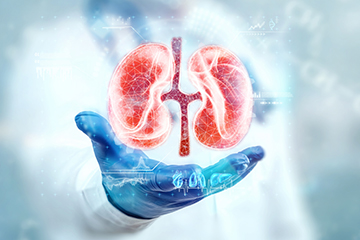
Among migrants in Italy, the prevalence of end-stage kidney disease (ESKD) is increasing. Migrant patients commonly present to a nephrologist with advanced kidney disease, limiting the possibility of preventing progression to ESKD. Barriers to referral to nephrology care include low literacy rates, language barriers, lack of medical insurance, and cultural diversity.
According to Gaetano Alfano and colleagues, there are few data available on the prevalence and clinical characteristics of migrant patients in dialysis clinics. The researchers conducted a study comparing data on demographics, clinical characteristics, and health-related quality of life (HRQoL) among that patient population with Italian patients undergoing hemodialysis. Results were reported at the ERA 60th Congress in a presentation titled Epidemiological and Clinical Characteristics of Migrants on Chronic Hemodialysis Treatment.
The retrospective, cross-sectional observational study included patients who underwent hemodialysis at the University Hospital of Modena, Italy, from December 2021 to August 2022. All patients ≥18 years of age who were receiving hemodialysis were enrolled. Electronic health databases and interviews with selected patients were used to collect relevant data.
HRQoL was evaluated using the EQ-5D questionnaire. Scores ranged from 5 (no problems) to 25 (extreme problems). A scale (EQ VAS) ranging from 0 (worst imaginable health) to 100 (best imaginable health) was used for global self-assessments of health. The study cohort was divided based on their origin: migrant patients or nonmigrant patients. Using criteria from the International Organization for Migrations, migrant patients were those who were born in a foreign country and came to Italy for work, family reunification, economic, or political reasons.
The overall cohort included 302 patients on hemodialysis. Of those, 18.2% (n=55) were identified as migrants: 62% from Africa, 20% from other countries in Europe, 16% from Asia, and 2% from Latin America. Seeking work and family reconciliation were the primary reasons for migrating to Italy (84.3% and 15.7%, respectively). A consistent percentage of the migrants (37.5%) were undocumented when they crossed the Italian border.
Compared with nonmigrant patients, migrant patients initiated hemodialysis at a younger age (48.1 years vs 70.7 years; P=.001). Sixty-nine percent of the migrant group were male, and those in the migrant group initiated hemodialysis a median of 12.3 years following their arrival in Italy. Median age of patients in the migrant group varied by country: sub-Saharan Africa, 44.7 years; Asia, 46 years; Europe, 53.9 years; and northern Africa, 54.5 years. Forty percent had kidney disease of unknown etiology.
Most of the patients in the migrant group (54.5%) initiated hemodialysis with a central vein catheter (CVC) and 53.0% had not been referred to a nephrologist prior to starting hemodialysis. At follow-up of 1.8 years, the rate of CVC use decreased to 26.3%. Only 14.5% had been educated regarding home dialysis. Using age criteria, 87.2% were potentially eligible for kidney transplantation, yet only 18.7% were active on the transplant waiting list.
Compared with the nonmigrant group, those in the migrant group had a better perception of HRQoL. Median EQ-5D scores were 5 in the migrant group compared with 7 in the nonmigrant group (P<.001). Scores on the global health self-assessment were 90 in the migrant group and 80 in the nonmigrant group (P=.028). When the EQ-5D score and the EQ VAS scale were adjusted for participant age, the differences did not remain statistically significant.
“Migrants were a consistent percentage of patients in our dialysis unit,” the authors said. “This group of patients was formed by young people often unaware of their kidney disease. Late referral to the nephrologist had a profound implication on vascular access for hemodialysis. The language barrier and cultural diversity were the major limitations to entry into the kidney transplant waiting list.”
Source: Alfano G, Fontana F, Magistroni R, Donati G. Epidemiological and clinical characteristics of migrants on chronic hemodialysis treatment. Presentation #6511. Abstract of a presentation at the European Renal Association 60th Congress; June 15-18, 2023; Milan, Italy.







 © 2025 Mashup Media, LLC, a Formedics Property. All Rights Reserved.
© 2025 Mashup Media, LLC, a Formedics Property. All Rights Reserved.